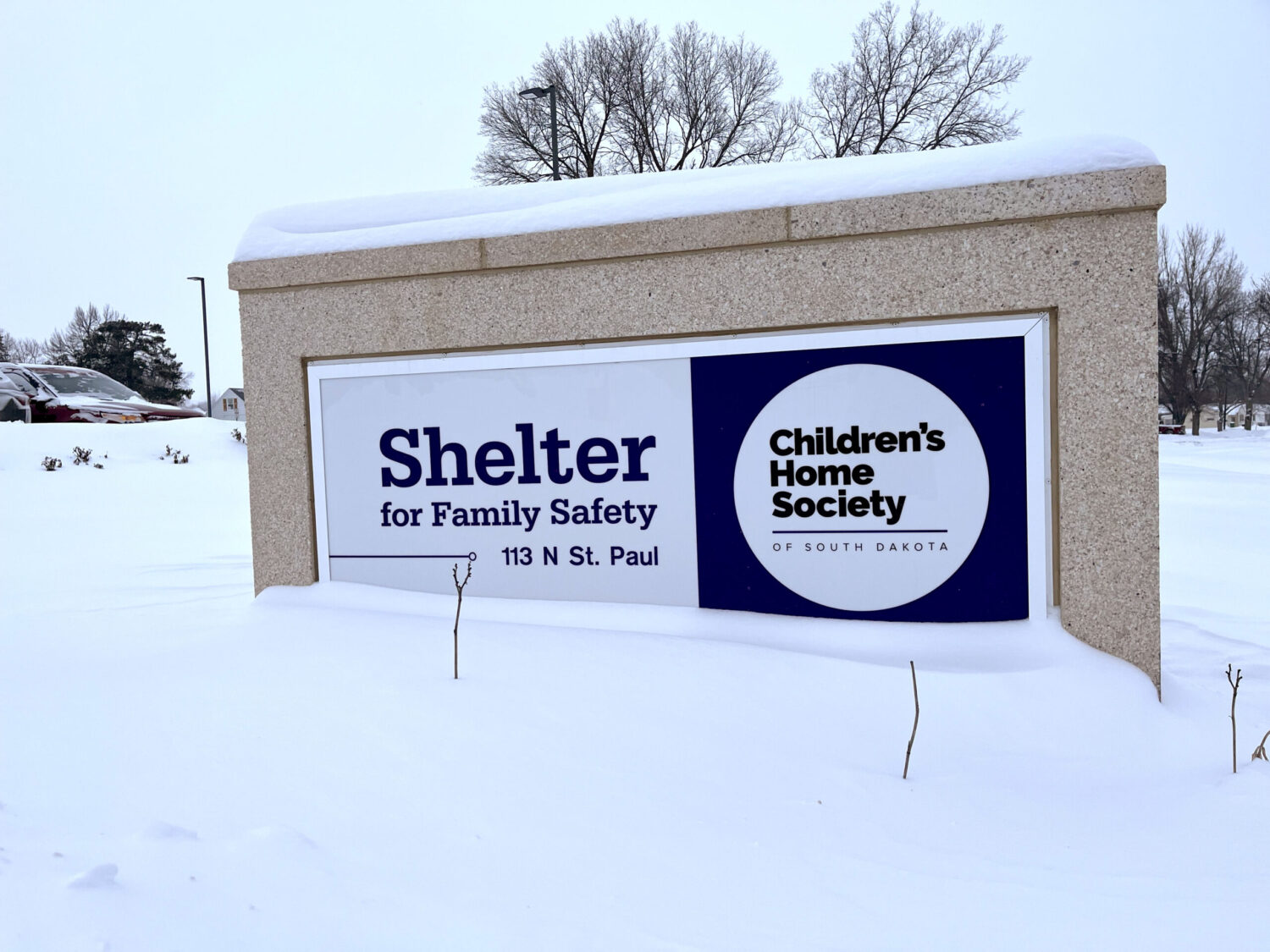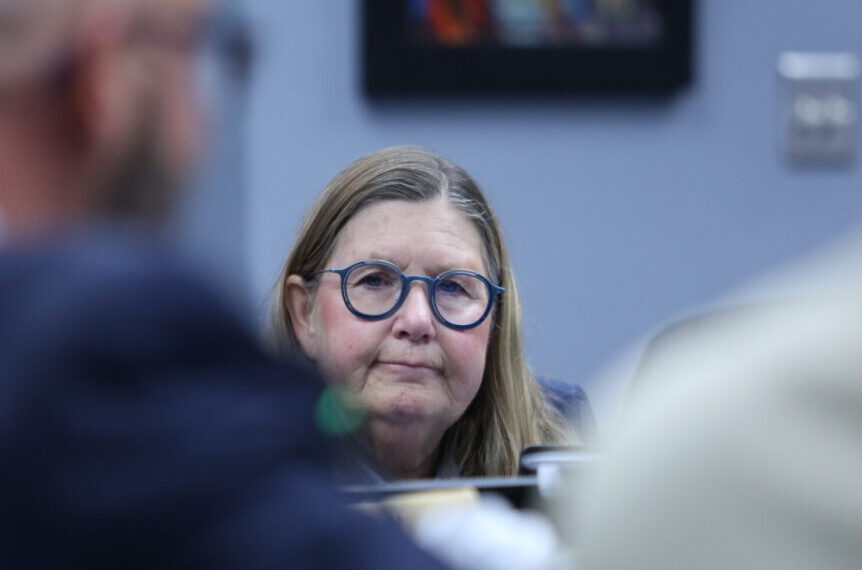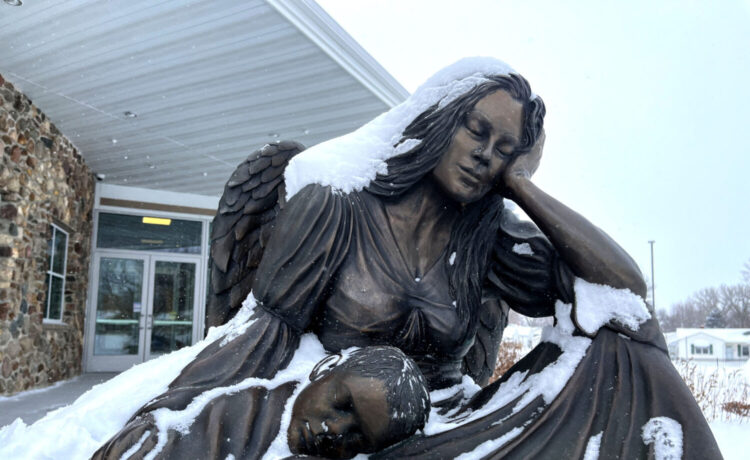Children no longer have to sit in the Sioux Falls Police Department lobby for hours — with nowhere to go and no one to comfort them — after a parent is arrested for domestic violence.
Years ago, police officers had to balance watching those children, finding a safe place for them to stay and handling the continuous line of intakes for the jail, recalled Minnehaha County Sheriff Mike Milstead.
“It was a terrible place for children who’d been through that, to sit at the front desk of the police department, to be babysat by a police officer who was also dealing with reports or drunk people coming in or handling other services,” Milstead told South Dakota Searchlight. “It was a bad situation.”
That changed after the Children’s Inn, now Children’s Home Shelter for Family Safety, opened in 1977. The shelter provided a safe place for families and children, as well as resources for recovery.
Law enforcement in Sioux Falls and across the state have become “extremely dependent” on shelters, using victim services on a daily basis to provide critical resources for the community, Milstead said.
But South Dakota provides minimal funding for what Milstead and other victim service professionals view as a necessary piece of public safety. Cities and counties provide limited funding as well.
Instead, the state depends heavily on federal funding.
That’s become a problem as federal funding declines, leaving victim services and shelters with limited funds to operate. Although the state Legislature approved $5 million in one-time funding in 2022, that money quickly ran out.
“It’s a huge step backward if those shelters would have to close or cut to bare bones services,” Milstead said. “It’s a step backward for the safety of these people. It’s a huge step backward for public safety.”
Federal funding cut in half from 2018 to 2023
There are 28 victim shelters and crisis centers across South Dakota, according to Krista Hereen-Graber, executive director of the South Dakota Network Against Family Violence and Sexual Assault.
Most South Dakota shelters budgets’ exist on federal funding. Any entity providing victim services receives funding from the federal Victims Of Crime Assistance (VOCA) program – ranging from shelters to abuse counseling to human trafficking agencies.
There are 51 organizations in South Dakota that receive funding from VOCA and other federal and state victim service funding.
South Dakota received a record amount of VOCA funding in fiscal year 2018, but a shift in Department of Justice practices resulted in a 70% decrease in the fund nationally. The last award the state received for victim services from the federal government, for fiscal year 2024, was $4.5 million — $8.2 million short of what the state requested. State funds supplemented $2.27 million.
In 2021, Congress and President Joe Biden passed the VOCA Fix to Sustain the Crime Victims Fund Act. All three of South Dakota’s congressional delegates supported the bill, but the fund hasn’t built up as quickly as hoped or expected, Heeren-Graber said.
That’s due to less federal fines and fees being paid to the Crime Victims Fund and VOCA. The fund depends on deposits of fines and penalties paid by people convicted in federal cases. Federal prosecutors are increasingly entering into agreements with defendants instead of prosecuting cases, which means those fines and fees go toward the U.S. Treasury instead of the Crime Victims Fund.
But the need for services has increased. The number of victims served in South Dakota has risen from 12,763 in 2017 to 15,375 in 2023. The number of victims sheltered has remained steady, but is expected to increase by hundreds by 2025, according to the governor’s latest budget.
While organizations in larger areas like Sioux Falls or Rapid City have access to more fundraising opportunities, most victim services entities in South Dakota heavily rely on government funding.
“That absolutely limits these organizations’ ability to provide any services past the basic emergency services — which just isn’t enough,” Hereen-Graber said.
A public safety role: ‘Victims are going to have nothing’
About 60% to 70% of the Redfield crisis shelter’s budget depends on public funding. The small shelter, called Jenny’s Safe House, can serve up to 10 people and fields two to three calls a week on its 24/7 emergency line, according to Executive Director Robin Harty.
Due to decreased funding, the shelter has had to cut back hours, relying mostly on volunteer work from staff to cover Hand, Spink and Faulk counties. The organization has reduced travel, training and advertising budgets as well, though two of the three newspapers that serve the region offered to continue running the shelter’s ads for free because they deem it a public service.
“We’re already being told that next year’s funding could be worse,” Harty said. “Without that funding, our doors are going to close. That’ll leave these people with nowhere else to go. These victims are going to have nothing.”
The closest shelter to Redfield is 42 miles north in Aberdeen.
The shelter primarily fields calls for resources and guidance, since there is still a stigma in the rural northeastern South Dakota region for seeking shelter, Harty said. Employees will also travel to communities on a weekly basis to present to schools and organizations and provide in-person support.
In Sioux Falls, larger facilities serve more clients but the majority of the budget comes from fundraising. Only 15% of the Children’s Home Shelter for Family Safety’s budget comes from government funding. The organization is lacking funding for 40.7% of its budget expenses this year.
“We’ve gotten the fundraising and we’ve made this huge expansion happen, but we all know that can get tapped out while the number of individuals seeking shelter and the population of the county continues to grow,” said Deanna Larson, Chief Operating Officer of Children’s Home Society.

It’s frustrating for victim service providers because their work reduces the burden on law enforcement and the courts, but they’re not financially treated as part of those systems.
Minnehaha County funding for the Children’s Home Shelter used to be listed in the sheriff’s budget, Milstead said, because it was considered a piece of public safety. The funding was moved to a group of other nonprofits years ago.
Having proper resources and services in place to not only shelter people in crisis but help them recover — finding affordable housing and offering counseling — helps reduce the chance that they’ll have to use those services again. It also reduces the likelihood of family separation and children being placed in foster care.
“More violence and more harm impacts the whole judicial system,” Larson said. “By being there and removing individuals from those dangerous situations, we are reducing those calls and needs and financial burdens on the judicial system.”
Legislative push for more state funding
Harty said victim services need to be funded better.
“It’s like you go home, lock your doors, draw your shades closed and pretend the rest of the world doesn’t exist,” Harty said. “That’s what it feels like. It feels like the state and the federal government are pretending these victims don’t exist.”
After the Legislature approved one-time funds for agencies in 2022 — helping organizations offset costs in 2022 and 2023 — state funding for fiscal year 2024 dropped by $4.1 million. And federal funding has not returned to what it was.
That left victim service providers with a 69% cut in state funds from 2023 to 2024. The overall cut in funding was 38%.
“That money did help us get by but, unfortunately, the need is great,” Hereen-Graber said, referring to the extra state aid. “You go from $10 million in VOCA to approximately $3 million, and that money will go quickly.”
The state’s contribution to Domestic Abuse and Sexual Assault programming, which is another funding source for victim services, has remained at $225,000 annually for over a decade — $25,000 less than what the fund started at in 1993 — and was not affected by the one-time influx of state funds.

The 2022 legislation was a hard lift, recalled Rep. Linda Duba, D-Sioux Falls.
Sioux Falls Republican lawmakers Sen. Jack Kolbeck and Rep. Taylor Rehfeld sponsored the legislation, which died in the House Committee on Appropriations before being recalled and passed without recommendation. The bill sailed through the House on a 56-13 vote before being signed into law by Gov. Kristi Noem.
This year, Duba is looking for a small bite out of the state’s remaining $131 million of federal American Rescue Plan Act funding, to fund victim services. Noem announced in her December budget address that she’d like a majority of the money to go toward water projects.
“She’s got her ideas of what she wants to do with that money, but the Legislature also gets to take a swing at it,” Duba said. “These are marginalized individuals who are in some of the most desperate situations of their lives. We have to help them.”
That one-time funding would create a pot of money to help victim services and shelters remain afloat until federal funding increases again — a similar plan to the 2022 legislation.
But Duba is wary about reliance on federal funding. If the decreased federal funding continues, that will mean South Dakota would have to spend more to supplement funding or risk losing these services.
“This is putting people over programs,” Duba said, echoing a line from Noem’s budget address.
GET THE MORNING HEADLINES DELIVERED TO YOUR INBOX
















